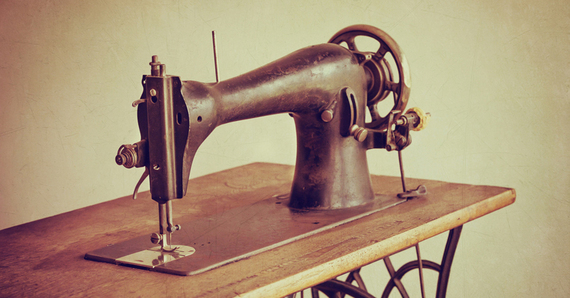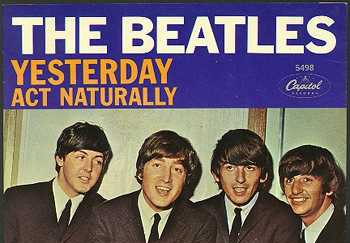Have you ever had a great idea come to you in a dream? These people have, according to the trivia book Uncle John's Bathroom Reader Attack of the Factoids.
DREAMER: Elias Howe
DREAM: Being boiled by cannibals who danced brandishing spears with a hole near the tips
RESULT: The sewing machine
American inventor and former textile-mill worker Elias Howe couldn't quite figure out how to make sewn stitches interlock so that seams didn't pull apart. But in the 1840s, he had a dream about being boiled alive by cannibals who danced while brandishing spears with holes near the tips.
In the dream, the cannibals moved their spears up and down in a rhythmic way. He thought and thought about it, and then one day, inspiration struck: instead of using a standard sewing needle with a hole at the dull end, he needed to use a thread near the sharp tip. That kind of needle could pull a loop of thread through the cloth where it could meet on the other side a moving part that would anchor it with a second thread. It was just the breakthrough Howe was looking for and allowed him to make the sewing machine possible.
DREAMER: Otto Loewi
DREAM: Two live frogs with their hearts exposed
RESULT: Figured out that chemicals communicate nerve impulses to the body's organs
In the early 20th century, there was a lot of debate about whether nerve impulses were communicated to the organs via electrical or chemical messages. Loewi believed it was chemical but couldn't prove it. Then, one night in 1921, he dreamed of an experiment that would settle the issue. When he woke up, he feverishly scribbled notes but in the morning discovered that his notes were unreadable and he couldn't remember what he had dreamed. Luckily, he had the same dream the next night. It was a gruesome experiment on the still-beating hearts of two frogs.
Loewi followed the procedures in the dream: he slowed the heart of one frog using electrical stimuli and collected the chemical secretions that resulted. Then he injected the secretions into the other frog's heart, and it slowed too, proving that chemicals were how the nervous system communicated with a body's organs. Loewi won the Nobel Prize in Medicine in 1936.
DREAMER: Mary Shelley
DREAM: A mad scientist creating life in laboratory
RESULT: Frankenstein
In 1816, challenged to write a ghost story to amuse fellow guests housebound during a storm, 19-year-old Mary Shelley lay in bed half asleep. She later wrote, "With shut eyes, but acute mental vision, I saw the pale student of unhallowed arts kneeling beside the thing he had put together. I saw the hideous phantasm of a man stretched out, and then, on the working of some powerful engine, show signs of life, and stir with an uneasy, half-vital motion." The next morning, she got up and began writing what became the book Frankenstein.
DREAMER: Paul McCartney
DREAM: A lilting melody
RESULT: "Yesterday"
While filming the movie Help!, Paul McCartney woke up with a tune in his head and rushed to the piano to play it, singing "scrambled eggs" and other random words in the place of lyrics. He recalled, "I liked the melody a lot, but because I'd dreamed it, I couldn't believe I'd written it." Thinking maybe he had just remembered an old song, he played it for other people, asking if they'd ever heard it before. They hadn't. But they would, repeatedly, for decades. It became the 1965 Beatles hit "Yesterday," one of the most popular tunes ever recorded.
DREAMER: William Watt
DREAM: Being pelted in a hailstorm of perfectly round lead balls
RESULT: Perfectly round musket shot and cannonballs
Eighteenth-century Bristol, England, was known for its industry, especially smelting lead from local mines. Lead balls for muskets and cannons were big business, but were difficult to make round and smooth enough that they wouldn't jam weapons. A plumber by trade, William Watt's dream inspired him to climb to the top of a church steeple and dribble a stream of melted lead into a bucket of cold water far below. Sure enough, like any liquid, the lead formed itself into perfect balls and stayed that way until it solidified in the cool air and cold water. Watt had remarkably figured this out long before high-speed photography proved that raindrops were round and not, as widely believed, teardrop-shaped.
The article above is reprinted from Portable Press, the publisher of Uncle John's Bathroom Readers. Looking for more amazing facts and good laughs? Check out the latest Uncle John's Bathroom Reader® titles at bathroomreader.com.



